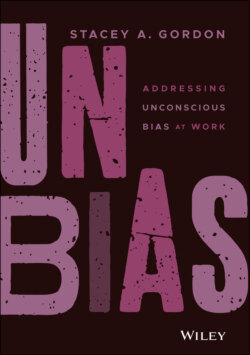Читать книгу UNBIAS - Stacey A. Gordon - Страница 8
Ben & Jerry's Exceeds the Bar
ОглавлениеOn April 18, 2016, the cofounders of Ben & Jerry's were arrested on the steps of the U.S. Capitol Building as part of a group of activists who were fighting for a better democracy. Right before they were arrested, Ben is quoted as saying, “The history of our country is that nothing happens until people start putting their bodies on the line and risk getting arrested.”
In an interview with CNBC in June 2020, CEO Matthew McCarthy said, “Business should be held accountable to setting very specific targets, specifically around dismantling white supremacy in and through our organizations.” He also said, “In businesses, in a lot of ways, you treasure what you measure. You measure what you treasure. If you don't put goals around these things, they simply don't happen.”
Ben & Jerry's operates on a three‐part mission that aims to create linked prosperity for everyone connected to their business: suppliers, employees, farmers, franchisees, customers, and neighbors alike. They have an economic mission to manage their company for sustainable financial growth, a social mission to use their company in innovative ways to make the world a better place, and a product mission to make fantastic ice cream. They are clear in those missions and ensure everyone else is too.
Their FAQ page answers questions like “What is Criminal Justice Reform?” and “Why would reforming cash bail be a good thing?” They post articles on their website that help people find their polling place, advocate for women's equality, and discuss racism in America.
Neither Ben nor Jerry have been shy about taking a stand and they are well known for creating ice cream flavors with big chunks, swirls, and textures that resonate around the world.
Some of those excuses include:
Diversity doesn't work.
I don't see color.
We just hire the best without regard to gender or race.
We don't want to lower the bar on job requirements.
I find these statements to be troublesome. At best they are ignorant, and at worst they build barriers to diversity by creating a culture where the status quo is acceptable. These statements create roadblocks to innovation by stifling the ability of leaders to harness the creativity of their workforce by restricting diversity.
These excuses stem from failing to be clear on your strategy. What is your motivation for wanting to take action? Do you have an authentic desire to change or is this a publicity stunt to placate your employees, customers, and investors?
The excuses also stem from failing to define organization values and align strategic diversity outcomes to those values. Do you know what you stand for as an organization? Do your employees know? Are you clear on which behaviors you will not tolerate in the workplace? Without a clear understanding of your organization's core values, it's impossible to embed effective diversity strategies into your systems and processes. Chapter 3 further discusses the establishment of values and how that relates to real organizational change.
Failure to create accountability in your senior leadership team is yet another area that cultivates these excuses. Do your leaders have clarity on what is expected of them and what their role is in creating an inclusive workplace? Do they know what level of ownership they have?
Have resources been allocated? Commitment goes beyond words. We focus on the failure to allocate time, energy, and dollars, but the failure to allocate decision‐making power is often overlooked. Without the ability to hold others accountable, your policies and procedures have no teeth.
Doing “the right thing” is difficult when you don't have information to direct your actions. The excuses that leaders rely on also stem from a failure to obtain data and create achievable metrics. How do you know if the needle moved when you don't know where it was when you began?
